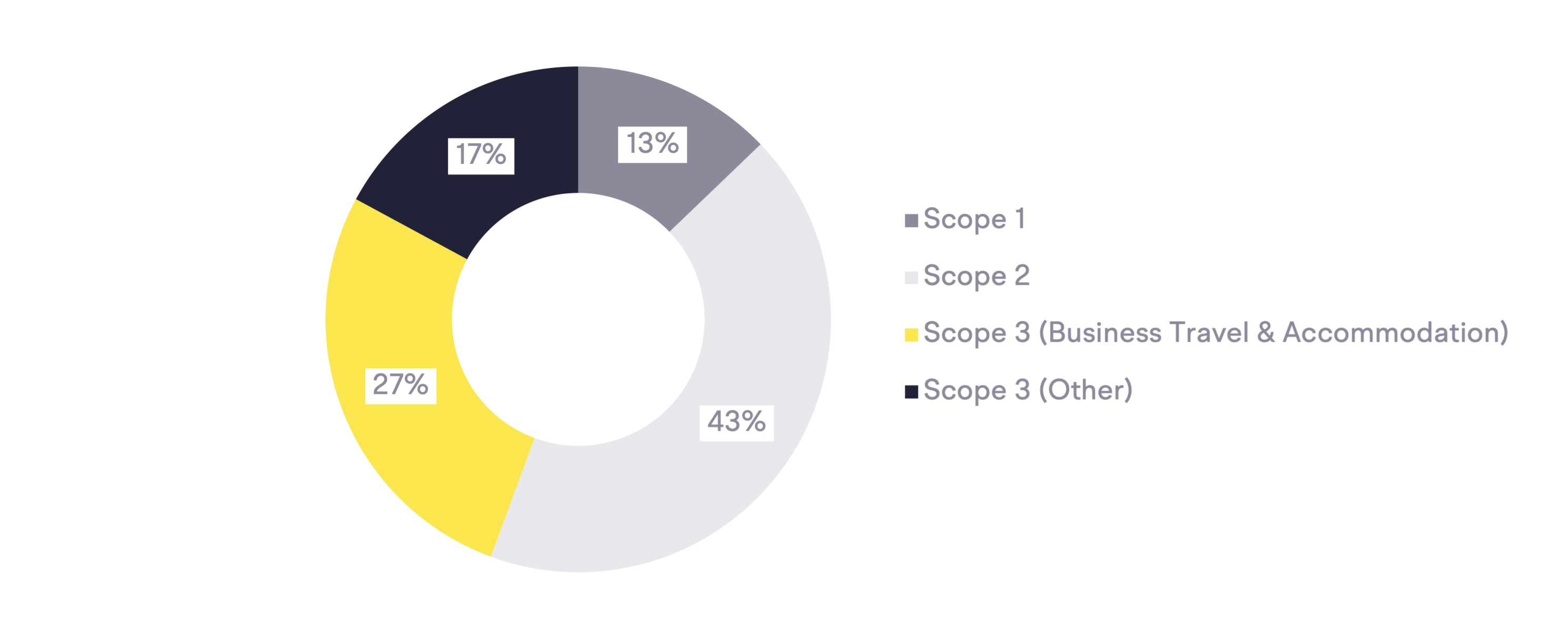Public Policy Offices - the impact of business travel on your carbon footprint

Do you work in the Public Policy Offices industry? As a public policy office, it is important to consider your impact on the environment. Measuring and reducing your carbon footprint is crucial to contributing to a more sustainable future. Additionally, implementing sustainable practices can help you reduce costs and improve your office's reputation, demonstrating your commitment to environmental responsibility.
On average, 27% of your carbon footprint will be from business travel
The carbon footprint of a company in the public policy offices industry is primarily composed of energy consumption and business travel. As a people orientated business, travel can contribute significantly to the overall footprint due to flights, ground travel, and accommodation.
Carbon Footprint of an Example Public Policy Office

How to reduce your carbon footprint from energy consumption and business travel
Minimise your energy use (scope 2)
Scope 2 emissions are indirect emissions. They come from the electricity, heat, or cooling that your company buys from outside providers. These emissions occur at the power plants that generate the energy but are related to your company’s consumption.
- Improve energy efficiency with LED lighting, smart thermostats, and efficient appliances.
- Enhance building design and insulation to reduce heating and cooling demand (we would recommend looking at the UK Green Building Council as a source of useful information).
- Switch to renewable energy sources, such as solar, wind, or hydroelectric power.
- Upgrade and maintain efficient HVAC (heating, ventilation and air-conditioning) systems.
- Foster employee awareness and engagement in energy-saving practices (we love the work our friends at Clever Carbon do on how to engage employees in sustainable practices).
- Implement energy management systems to track and optimise energy usage (take a look at the work Metrikus do!).
- Promote virtual meetings and remote work to save energy.
- Practice green procurement by selecting sustainable suppliers and partners.
Make responsible choices in business travel
- Have virtual meetings where possible
- Encourage use of public transport and carpooling (Route Zero is a great tool to compare the carbon footprint of journeys)
- Direct flights: if air travel is necessary, choose direct flights to minimise layovers and reduce the overall carbon emissions associated with take-off and landing.
- Efficient trip planning: consolidate trips and plan efficient itineraries to minimise the amount of travel needed.
- Green vehicle rentals: if renting a vehicle is necessary, choose fuel-efficient, hybrid, or electric vehicles (we’re planning to try Green Motion for our next trip).
- Sustainable travel policies: develop and implement company-wide sustainable travel policies to guide employees in making eco-friendly choices and promote a culture of sustainability.
- Book eco-friendly accommodation: book environmentally conscious hotels or shared accommodation, like Airbnbs, that have lower emissions. To help you book environmentally conscious hotels, Staze is a platform that helps companies make net zero hotel bookings. Using Staze you can compare the carbon emissions of different hotels, just as you would compare their prices. Every booking made through Staze is offset for free, which means the platform invests in carbon reduction projects to counterbalance the emissions generated by your stay. Companies using Staze have reduced their emissions from hotel bookings by up to 70%.
Your next steps
To show your company is serious about sustainability and not simply using it as a buzzword, we recommend starting by measuring your carbon footprint (we used our friends at Zellar) and setting a science-based net zero target. By making conscious choices in business travel, energy consumption and waste management by using platforms like Staze, you can significantly lower your environmental impact while still achieving your business objectives.

